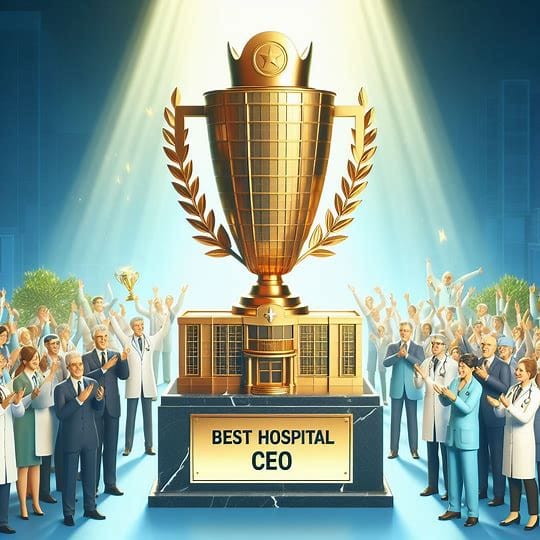Superstar Hospital CEOs

This week’s newsletter was inspired by two stories out of Fresno California. In one, the Fresno Bee reported that Valley Children’s Hospital has paid $10M for naming rights to the Fresno State University football stadium. The deal includes a catered luxury suite for home games, as well as seats on the team’s plane and tickets for away games. Now, who do you think is going to be sitting in that skybox? Kids with cancer? If I were, say, a 4 year old girl with leukemia, I can think of a whole lot of things I’d rather do than travel to a college football game. My bet is that the CEO is a football fan, and that the seats will be used to schmooze with board members and other wealthy people in the community.
The Fresno Bee also reported that the CEO Todd Suntrapack had been paid $5.1M in 2020. In this video interview from the local ABC affiliate, a hospital spokesperson seems indignant that anyone would dare question the CEO’s compensation. After all, he had hit “significant performance goals.” The spokesperson explained that the CEO actually only made $3.7M that year, because that the other $2M was a bonus for a different year. As if that somehow makes his pay perfectly reasonable. Keep in mind that this is Fresno, where over 20% of the population lives below the poverty line. $3.7M is pretty astronomical compared to farm worker wages.
Now pause for a minute — did you notice what I did? I compared CEO salary to typical worker wages, which is a classic social justice play. In our market economy, though, wages aren’t primarily determined by some top-down judge of fairness; they’re (theoretically) based on supply and demand. So let me reframe: Is $3.7M/year a market-based salary?
Consider for a moment another well-known labor market with high salaries, namely professional sports. This year's most extreme example is Shohei Ohtani, the Japanese pitcher whose contract with the Los Angeles Dodgers is reportedly worth up to $700M over 10 years. Why so much? Certainly there are a lot of other pitchers out there who would gladly do the job for less. The logic here is that a salary like Ohtani's actually pays for itself. This is because the value of the team is based in part on their winning percentage, and a top athlete, even one who’s just marginally better than all the other top athletes, can make a measurable difference in winning more games.
Should this logic apply to hospitals? The board of Valley Children’s Hospital apparently believes so. Reading between the lines of the news stories, they appear to be thinking of healthcare success in terms of brand and revenue. In the news story about stadium naming rights, for example, the expenditure was defended on the grounds that growing the hospital’s brand might bring in patients from other parts of the country, winning market share away from other children’s hospitals.
Now set aside for a moment whether having a hospital’s name on a football stadium is likely to draw patients away from more prestigious hospitals such as Packard Children's in Palo Alto (spoiler — it’s not). Given the role that hospitals play in our society, does this kind of thinking even any sense?
The mission of any hospital is serving the health needs of its community. The official mission statement for Valley Children’s says nothing about prestige or winning a competition for patients:
The mission of Valley Children's Healthcare is to provide high-quality, comprehensive healthcare services to children, regardless of their ability to pay, and to continuously improve the health and well-being of children.
Now, back to the question about hospital CEO salaries. Does the theory of the superstar deserving multimillion dollar compensation make sense? No, for two main reasons.
First, unlike a sports team, an optimally run hospital will never have a huge profit margin from which to pay its executives. Yes, hospitals need to cover their costs in order to be sustainable, but any margin well in excess of that should be returned to the community through reduced prices, not paid out to executives. Essentially, any CEO who extracts enough margin to cover a stratospheric salary is underperforming on their mission to to the community, and therefore not a superstar.
Second, unlike athlete salaries, CEO salaries aren’t set via a properly competitive labor market. There are no standardised statistics for CEOs that are analogous to earned run average or strikeouts. Their salaries are simply vanity plays. In the business world, money equals status, and many CEOs aspire to the status of the peers that they admire. A CEO of a regional hospital such as Valley Children’s is likely to aspire to the same status as, say, the CEOs of Children’s Hospital of Philadelphia ($7.7M total compensation in 2021), and Texas Children’s ($8.8M). And sadly, the group dynamics and psychology of local boards, typically made up of wealthy local businesspeople, plays right into CEOs’ hands.
Just a couple decades ago, hospital CEOs made about a tenth of what they’re paid today. Those were still respectable salaries, but not nearly the crazy amounts that you see today. It’s time to bring some rationality back to this particular labor market, and return most of that executive compensation money to where it really belongs, namely patient care.
